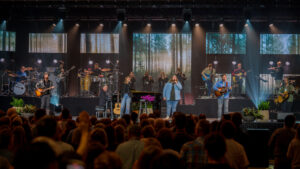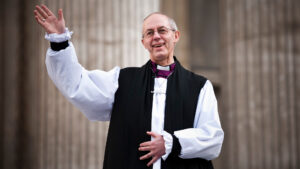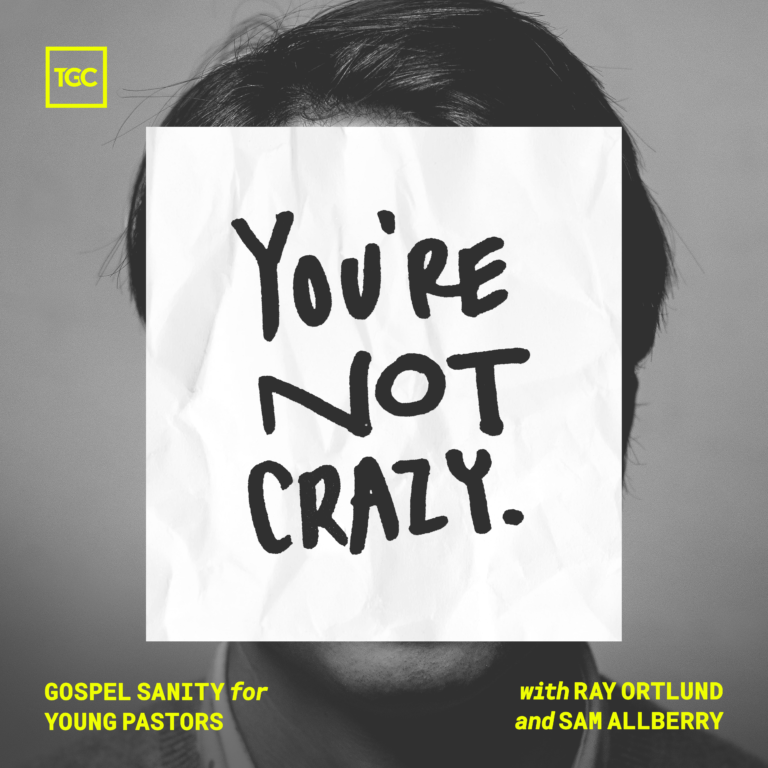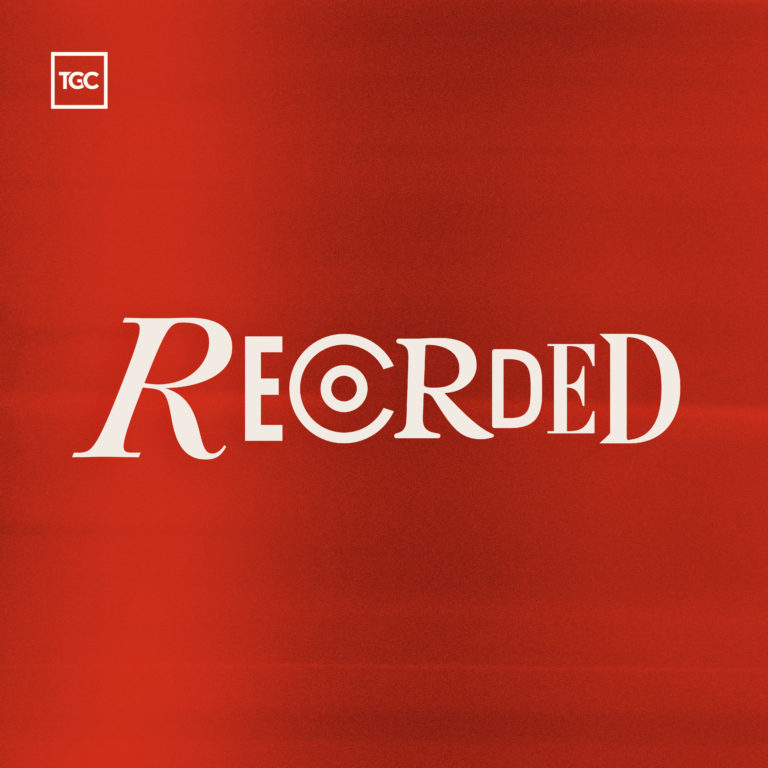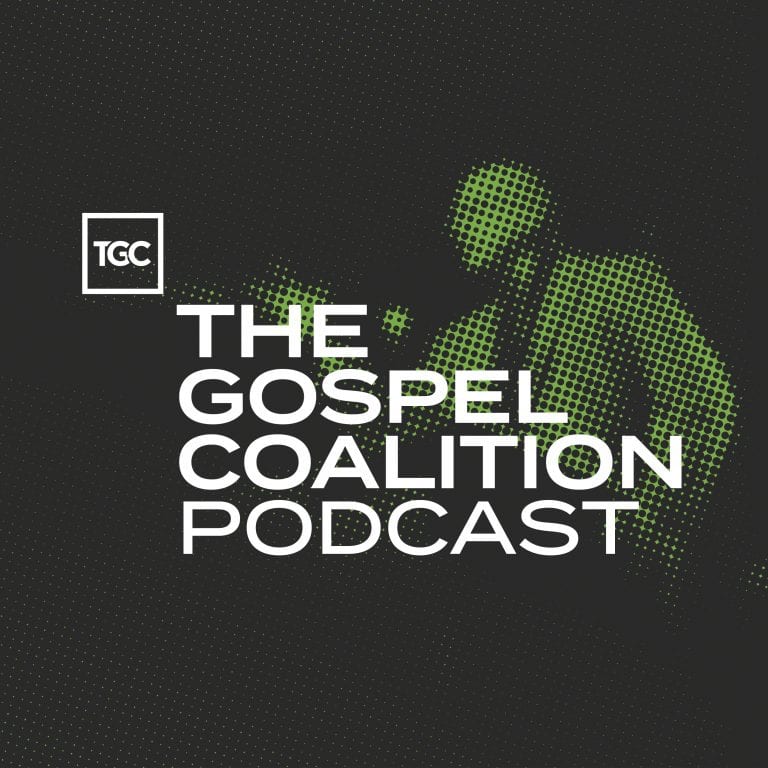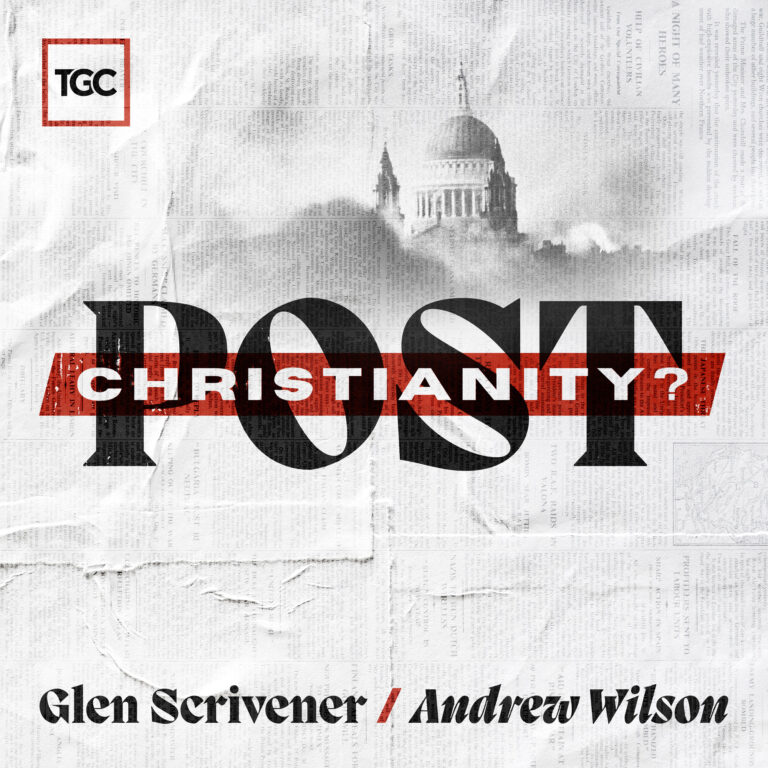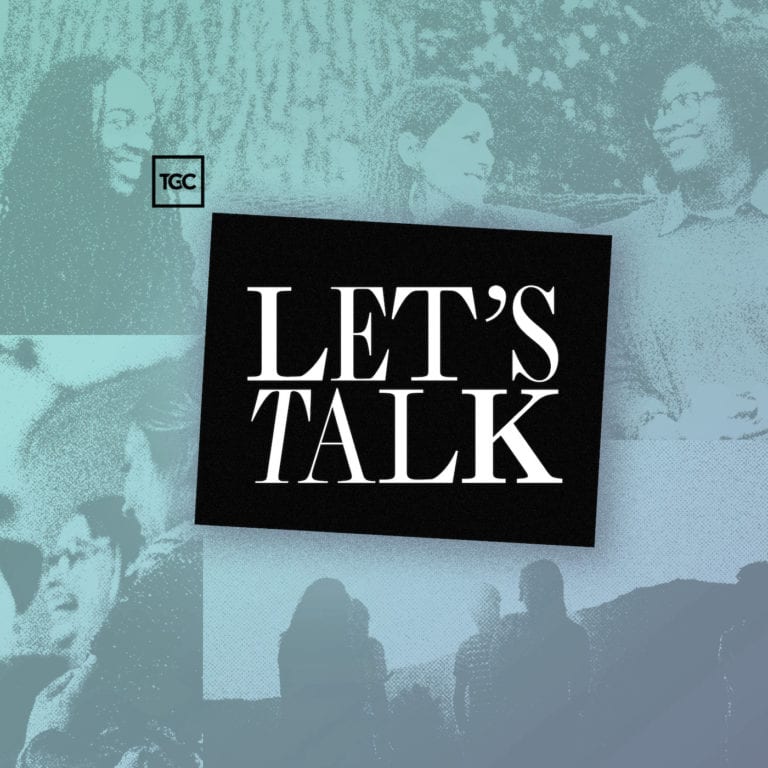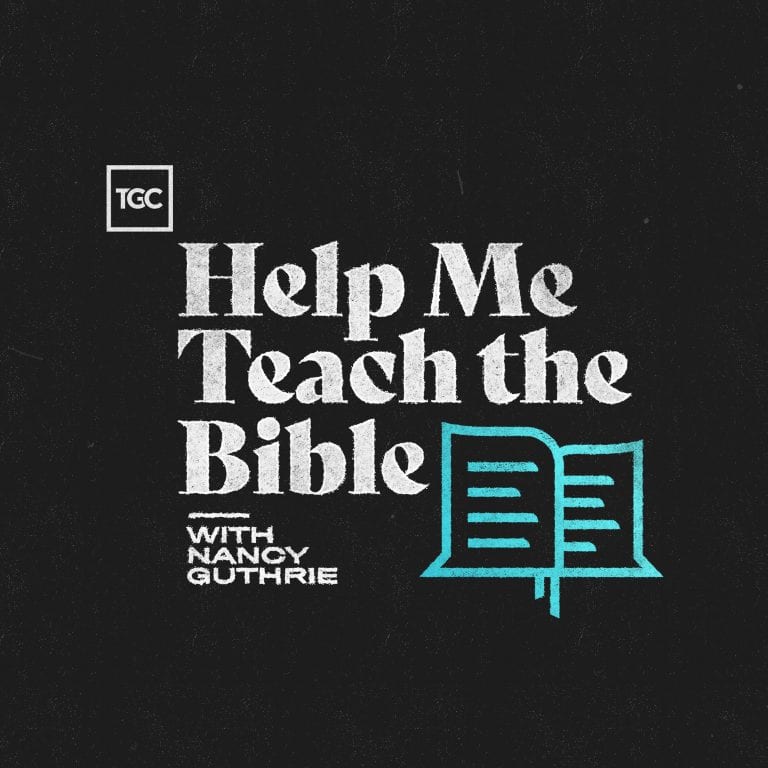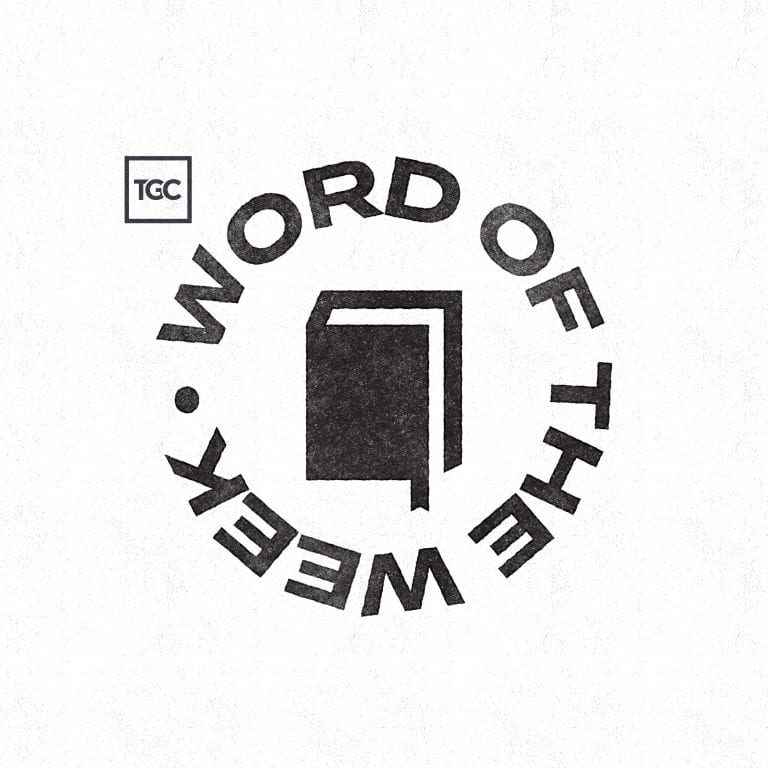Don Carson focuses on Jesus’s message to the church in Laodicea and the parable of the 10 virgins to illustrate the importance of understanding biblical texts within their historical and cultural contexts.
Carson teaches the following:
- How Jesus uses Laodicea’s economic symbols to critique spiritual lukewarmness
- How the contextual reading of Scripture is an essential precursor to careful biblical exegesis
- The symbolism behind Jesus’s foot-washing and what it means for us today
Transcript
Don Carson: This one is a corollary of something I’ve already said, but it is worth receiving separate treatment. In many, many cases, it is vital to place the passage of the Bible in its historical, geographical, cultural setting. Turn to Revelation 3. This is a well-known passage. This concludes the seven letters to the churches in Asia Minor. We come to the church in Laodicea.
Verse 14: “These are the words of the Amen, the faithful and true witness, the ruler of God’s creation. I know your deeds, that they are neither cold nor hot. I wish you were either one or the other. So because you are lukewarm, neither hot nor cold, I am about to spit you out of my mouth. You say, ‘I am rich; I have acquired wealth and do not need a thing,’ but you do not realize that you are wretched, pitiful, poor, blind, and naked.” And so forth.
Now archaeology and those who study ancient sources have long since demonstrated that Laodicea was a critical town. It was the place when you were traveling east where you changed your money. You were moving out of the empire’s primary constraints, and you would change your money before you traveled on toward India. So it was a bit of a banking center, and people on the whole were well-to-do.
There was a kind of black-wooled sheep there that produced a kind of coarse, strong fiber (not unlike our jeans, I suppose) that was well known in that part of the ancient world. Moreover, there was an ophthalmology center. People in the Middle East, then and now, often get infections in their eyes from dust storms and the like, and they developed some kind of mud pack with herbs that drew the puss, so they developed a bit of a center for curing people’s eyes.
So many of the symbols, therefore, that Jesus uses as he addresses this church … the exalted Christ addressing the church … are drawn from the life of the community. “You think you see so well, but I tell you, quite frankly, you’re blind and you need my eye salve. You think you’re so rich, but in fact you’re poor. You think you’re so well dressed; in fact, you need white raiment, not this black wool stuff.”
Then when it comes to the lukewarm, that is perhaps where we’ve made as many mistakes as anywhere. We have often thought this means God prefers either the people who are completely cold and opposed to him (because then at least you can get a rise out of them when you try to deal with them) or those who are really spiritually warm, hot, on fire, full of zeal, but this sort of “blah” zone in the middle, where people are neither hot nor cold, is simply repulsive and God wants to get rid of them.
Of course, the problem with that view is that it sounds as if God actually prizes more highly full-scale, coldhearted opposition to himself above even sort of a middle level of warmth; the same Jesus of whom it is said that he will not crush a bruised reed or quench a smoking flax. In fact, the whole thing is resolved quite nicely if you know something of the plumbing problems of the ancient city.
In the Lycus Valley, where Laodicea is located, there were three New Testament towns: Hierapolis, Colossae, and Laodicea. Colossae has never been excavated, but it is known (because you can go to it and see it; I have photographs of it) that there was a fresh cool water supply there. It was the only place in the Lycus Valley with good clean water.
Hierapolis was known for its hot springs. You can see the carbonate linings on endless pools. So people went there to take, as the French say, “the cure.” It was known as a hot springs center. Laodicea didn’t have any good water at all. They actually piped it in through stone pipes from some distance away, and the water was so tepid and foul by the time it got to them that Laodicea was known throughout the ancient world as having the worst water on the fringes of the empire. You find remarks on this sort of thing in Cicero.
Now in that kind of framework, what Jesus is saying is, “I wish you were cold and useful like the water at Colossae or hot and useful like the water at Hierapolis, but frankly you’re just nauseating. You’re just disgusting.” In other words, he’s not talking about their spiritual temperature; he is talking about their usefulness, about their value. You can be hot and useful or you can be cold and useful. To anybody in the Lycus Valley that was obvious. You could either be at Hierapolis or you could be at Colossae.
“But you are simply nauseating, and you are so revolting to me I want to vomit you out of my mouth.” Those are the words of the exalted Christ to the church at Laodicea. Within that framework, therefore, we are not to prize spiritual coldness. What we are to avoid is that kind of self-centered, self-satisfied apathy that is intrinsically useful for nothing. That was the Laodicean church: very sure of itself but useful for nothing. Then Jesus says, “You are so nauseating to me I will spit you out of my mouth.”
Now that is the sort of background you are not going to get simply by Bible reading. That is the sort of background knowledge you will get from reading the best commentaries. All that I’ve said in this case is, for example, found in a commentary by Robert H. Mounce in the NICNT series, and the fundamental research for it is listed there. I could refer you to other books, but, in fact, one decent commentary brings out all of that sort of material very quickly.
That is part and parcel of what I mentioned earlier. God has chosen to reveal himself in space/time history, so there will be these cultural things that need explaining in order to have an accurate interpretation of the text. That means we need to learn to be commentary readers. Let me give you one more example of this sort of thing: Matthew, chapter 25. There are three parables in this chapter. We’ll just take the first one, the parable of the 10 virgins.
You will remember the story. “The kingdom of God will be like 10 virgins who took their lamps and went out to meet the bridegroom. Five of them were foolish and five were wise.” Their wisdom or folly consisted in their ability to take extra oil or their failure to take extra oil in case the bridegroom was delayed. The bridegroom was a long time in coming, we’re told, and they all became drowsy and fell asleep.
At midnight the cry rang out, “Here’s the bridegroom! Come out to meet him!” Unfortunately, the foolish virgins had run out of oil. They had to go and buy some more. While they were gone, the bridegroom arrived. The virgins who were ready went in with him to the wedding banquet. The door was shut. Then the others came and said, “Sir! Sir! Let us in!” “I tell you the truth, I don’t know you,” he replied. “Therefore, keep watch, because you do not know the day or the hour.”
Now I have never been to a wedding that looks anything like that. The bride isn’t even mentioned. Have you noticed? That upsets more commentators. They suspect Matthew was a misogynist or they wonder if perhaps there was some fundamental disbelief in the notion that the church is the bride of Christ. It all misses the point.
Today, our cultural structures in weddings are very different. If there is a write-up in the newspaper, the bride is discussed in great detail: what her veil was like, her taffeta this and that, the length of her train, what the bridesmaids or matron of honor wore, and on and on and on. Somewhere down at the bottom it says, “The groom was also present.”
In the ancient world, it wasn’t like that. There was much more attention on the groom, partly because in those days the groom had to pay for it all. Today, the bride’s parents pay for most of it. The person who pays the piper gets the press. In the ancient world, the groom paid for most of it. That was also the reason most men didn’t get married until they were a little older. They had to earn enough money to be able to pay for this wedding.
In a local village, it went something like this. The groom and some of his closest friends would process through the streets to the home of the bride and her parents, and there would be some festivities and ceremonies there. That could go on for a short time or a longer time, and then they would all process back through the streets to his place where the real party began, which could go on for a day or a week, depending on how much money you had and what rank in society you found yourself at.
Along the way, the people who had been invited would join this procession. Only the small handful would join in the initial trip to the bride’s place, but coming back to the groom’s place, people would join in. Then, as now, there were gate-crashers, party crashers. Sometimes you could spot the real people by the fact that they were prepared. They were dressed in the right clothes, and often they would carry their lamps so they would be part of the torchlight parade.
They didn’t have the exact notions of time we have, so if the wedding invitation said 8:00, it could have been 9:00 or 10:00 or 11:00, in this case midnight. What has happened now is that 10 ladies (the number is purely a useful number; it’s not representative of anything) are part of this invited party, and five have had the foresight to bring extra oil in case the groom was delayed; five didn’t. The whole plot of the narrative turns on this one point: the groom was delayed.
There’s no blame attached to the fact that some went to sleep. There’s no wrong in going to sleep at this point. That’s fine. Go to sleep if you like, but be ready. The way you’re ready in this narrative is have your oil. Then the cry goes up. “Here comes the groom!” They’re all going back to his place. He’s paying the shots. You don’t say, “Here comes the bride.” You say, “Here comes the groom.” He’s paying for it.
Within this framework, then, those who are ready join in the procession. They go into the courtyard. The gates are shut. Party crashers are kept out. Then along come the people who have gone for their extra oil. “Let me in! Let me in! I have my lamp here now too.” “Sorry, gates are shut. Never knew you.” That was just a village wedding. Then Jesus draws the point. “Therefore, keep watch, because you do not know the day or the hour.”
This is part of the eschatological discourse, the Olivet Discourse, the discourse on the end (Matthew 24–25), and Jesus’ point is quite straightforward. In these various parables, he tells different ways in which we must wait. We must wait and be productive, he says. We must wait with patience. We must wait because the coming could be unexpected like the thief in the night. Here, wait and be ready even for long delay. That’s the point.
The point is a fairly simple one that the church has to learn not only over the centuries but in every generation, yet the lesson falls most easily once we realize something of the rudiments of marriage ceremonies and styles in a Palestinian village in the first century. It becomes necessary, therefore, to do a bit of reading and work and background material to get a feel for the cultural framework.
2. Locate the passage in its place in redemptive history.
I’m going to say more about that another day, but let me say a few things now. What I mean by that is that the Bible does not come to us as a book of abstract truths, a kind of leather-bound systematic theology. It comes to us as a series of very different kinds of documents but all connected, amongst other things, by a common storyline, a common plotline.
You start with creation and the fall, the rise of the nations, and the judgment of the flood. Then you have the choice of Abraham, the beginning of the formation of a nation, and various things connected with that: the rout of the kings, Melchizedek, and so forth. Then some of the great patriarchs. The people go down into Egypt.
Out of Egypt, then, at the great exodus, which constitutes the people as a nation, the giving of the Law, the Ten Commandments, the sacrificial system, the tabernacle, the great confrontation with God at Sinai, the establishment of the Levitical priesthood system, and so on. Then not only the taking over of Canaan, the Promised Land, but then eventually the rise of the monarchy, the division of the kingdom, eventually the judgment upon both kingdoms, and finally the South going off into captivity in 586 after the third massive invasion.
Then the restoration to the land, and through all of this, a rising number of ways of looking forward to the coming of a redeemer, a savior, a hero, a messiah, an anointed one, a prophet, a priest, a king, but all meshed into this story. Eventually comes the Messiah himself, who fulfills such promises that out of Abraham’s line will come one from whom all of the nations of the earth will be blessed. That’s part of the whole Bible storyline.
With his coming and his death and his resurrection and his gift of the Spirit, we enter into a new set of relations and dynamics. The locus of the people of God is no longer a nation. The locus is now an international community. There are some lines of continuity between the ancient people of Israel and the new people of God and there are some lines of discontinuity.
Then you move on, and there is expectation of what will be at the end when Jesus comes to wrap it all up. That’s part of the whole Bible storyline. It becomes extremely important to place your particular document at the right point on the storyline. Otherwise, we start reading the Bible anachronistically. We start making it say things before it’s ready to say things. We start reading it out of its salvation historical context.
Now then, at the risk of technical terms.… Let me tell you what the blocks say. This block simply says, “Exegesis.” This block says, “Biblical theology.” This one with arrows coming in says, “Historical theology.” This block says, “Systematic theology.” So we have moved from exegesis to biblical theology with input from historical theology to systematic theology. Now let me explain the terms and what I’m after with this diagram, which I’m shortly going to change.
By exegesis I simply mean the faithful reading of the text. That’s all I mean. By systematic theology I mean that kind of theologizing, that kind of reflection about God and his truth, that is cast in atemporal terms. That is, it asks and answers questions of this sort: “What is God like? What is sin? What are human beings? How are we redeemed? How are we put right with God? What are we here for?” Those are atemporal questions. They are not asked, nor are they to be answered according to the particular place where a biblical document lies on the stream of redemptive history.
In biblical theology, we approach things just a bit differently. There are two elements of biblical theology in particular that must be understood. First, in biblical theology, unlike systematic theology where you use the whole Bible to answer the questions, you work corpus by corpus. What does John say? What does Isaiah tell us about God? What do Jeremiah and Lamentations say? What does John and the Johannine epistles say together about God? You work with corpora. So not just Romans but all of the Pauline letters.
In that sense, you are building up a particular picture of the contribution to canon, under God, made by a particular biblical writer or a particular biblical group. That means you are asking the question, in the second place, from a temporal point of view. Don’t forget the questions over here in systematic theology are atemporal. “What is God like?” Now the questions over here in biblical theology will be, “How did God disclose himself to the Jews at Sinai? What contribution to the total doctrine of God is made by what Isaiah says about God?”
By putting arrows through these blocks, what I’m really saying is there is a sense in which what we must do is read the text as honestly and carefully and accurately as we can and gradually build up our biblical theology in corpus after corpus after corpus of God’s revealed Word until, increasingly, we can build up our systematic theology and simply answer the question.… What should you believe about X? (An atemporal question.) Clearly, the line of control is this way. You start with the reading of the text.
Then, of course, you should be remembering that other people have traveled this way before. We’re not the first generation of Christians ever to think about the Bible. Therefore, we must read what others have said. We must at least give some thought to former teachers and former preachers and former theologians, former Christian thinkers and writers and readers, and ask, “What can they do to enrich our understanding of texts?”
That’s the contribution, in part, of historical theology. It’s not directly on this line, because it is not part of the biblical text itself, but it makes its contribution to our understanding of systematic theology. Now then, my point here is it is important in our reading of texts to try to place the particular text we’re dealing with at the right juncture along the line of biblical revelation, of God’s historically conditioned revelation, of his choice to reveal himself at periods of time in different ways all the way up to the present.
You cannot faithfully expound Malachi without saying something about the return of the people after the exile, the rebuilding of the temple, where they were at that time. At the same time, it builds up a whole picture of God’s sovereignty in love that it would be easy also to contribute from that base to a whole doctrine of God’s choice to love his own people even, under New Testament terms, to the death of his Son. But in the first instance, to make sense of Malachi, Malachi has to be placed at the right point in the pattern of redemptive history.
Now there’s another thing to be learned from this chart that will anticipate something I’m going to say later, so at least let me warn you now. This is very convenient, all of these lovely little blue arrows going in one direction, but the fact of the matter is when I actually come to do my exegesis, whether I like it or not, I am influenced by my prior understanding of systematic theology. In other words, what I think I already know about systematic theology is going to influence the way I read things over here.
So instead of just a straight line through, there’s a back loop that’s influencing me over here. In fact, it’s more complicated than that. It looks more like that. In other words, everything we think we know in systematic theology affects how we interpret historical theology, which also affects our systematic theology. Our historical theology also affects our exegesis, and our exegesis affects the way we do our historical theology, and on and on and on, which introduces us to the so-called new hermeneutic, which I will come to in another day.
In other words, it is important to recognize that we are not simply going to take the Bible and read all there is to know about Genesis, and then next week all there is to know about Exodus, and a few weeks on, everything there is to know about Ecclesiastes. We’ll build up a whole biblical theology of these, and then in the course of a year, two years, five years, or whatever the schedule is, you’ll know all about systematic theology. That’s not the way we think. That’s not the way we work.
Most people have been Christians long enough to know that when they approach the text, they are approaching the text necessarily out of a whole framework of convictions, values, biases (some right, some wrong), commitments, experiences of grace, experiences of failure, theological convictions of great earnestness, sometimes backed up with a lot of knowledge and sometimes with more zeal than knowledge but no less passionately held for that. Those things all affect the way we do our biblical theology, the way we do our exegesis, and so on.
What we must do is recognize that those things happen. Otherwise, we will rarely be able to hear Scripture speak for itself and so reform our theology. At the end of the day, systematic theology ought to help control the way we do exegesis, because after we’ve learned some truths about God, we don’t have to repeat them again and again and again. They will shape the way we read the text the next time.
But supposing we have learned something that is untrue. Something is untrue in our systematic theology. Then we still want our reading of Scripture to overturn what we have falsely learned, don’t we? The authority must still be in the text, and we must learn so to read the text that the text can reform us. There is a straight line this way. The line of authority must finally go that way, even though we acknowledge, as in computer feedback loops, that there are many, many points of return feeding in information as we go about the business.
Now we’ll come back to that another day: how to think through texts where it seems to be challenging our fundamental beliefs. Is this a place where we should be reforming our theology or is this a place where we have so badly misunderstood the text that we need to do some more reading to understand it in a way that it will conform with our theology?
3. Delimit the function of biblical statements and biblical truths.
Now I wish I could say a lot about this. I will simply give one illustration. Consider the foot washing of Jesus in John, chapter 13. At the end of that, Jesus says his disciples are to do what he has done, but on the same night (though not in the same chapter; only in Matthew, Mark, Luke, and 1 Corinthians) Jesus says we are to repeat the Lord’s Supper until he comes.
Most of us cheerfully celebrate the Lord’s Supper or Eucharist. Most of us do not go through foot washing ceremonies. Why not? There are branches of the church that do. Why or why not? There are actually several principles that are at stake here. On one of the days, I want to deal with this problem of how to wrestle with relative and absolute statements in Scripture. We’ll come to that in due course.
One of the principles is to examine how a passage functions in its context. In its context, John 13, the foot washing functions in two ways. First, it points to Jesus’ death. If you recall, Peter says, “You’re not going to wash my feet, Lord,” and Jesus replies, “Unless I wash it, you can’t have any part with me.” Peter typically says, “Well, in that case, give me a bath.” Jesus says, “Well, once you’ve had a bath you don’t have to wash the whole thing all over again, just the dirty bits.”
Clearly, that is a way of saying there is an analogy between Jesus’ foot washing and his cleansing of his own people. Thus, the foot washing is to be understood as a way of pointing to the cleansing that comes from the cross. It also points in another direction. Jesus explicitly says, “If I have taken the humble seat, then you too must take the humble seat. If I have done this for you, then you must do this for somebody else.”
If we take that kind of lesson and institutionalize it, we could have officials doing foot washing in a foot-washing ceremony where there’s not a scrap of humility, which would rather miss the point. Now there are other factors involved, but one of the most important factors to learn in these sorts of things is to delimit the function of statements and claims according to the text itself.
4. Go with the flow.
By this I mean that most parts of the Bible (there are a few exceptions) are designed to be read in flow. They are discourses (like Romans) or they’re narratives (like the Gospels or Kings) or they’re whole psalms, which should be read as a whole, or they’re chronicles, or whatever.
There are only a few bits of the Bible where you have lists of proverbs, for example, where the trick is not to go with the flow but to meditate reflectively on each individual proverb one by one. Even there, you might have a collection of proverbs that are grouped together under certain themes and then, again, you have to go with the flow.
Now when the Bible was first read in the churches, they did not read half a verse and then spend 45 minutes expounding it. They read it. Go with the flow. There are many, many texts of the Bible that will simply come alive if you will read very carefully, very slowly, very accurately, but with the flow.
Let me end with one more passage: Matthew, chapter 11. Here John the Baptist learns in prison what Christ was doing, and he sends his disciples to ask, “Are you the one who was to come, or should we expect someone else?” Jesus replies (verses 4–6), “Go back and report to John what you hear and see: The blind receive sight, the lame walk, those who have leprosy are cured, the deaf hear, the dead are raised,” and so forth.
What Jesus is doing is replying by giving a summary of his ministry in the words of prophecy. The words of prophecy are from Isaiah 35 and Isaiah 61. Let me just read you from Isaiah 35. We read these words: “Then will the eyes of the blind be opened and the ears of the deaf unstopped. Then will the lame leap like a deer and the mute tongue shout for joy,” and so forth. He is answering the question in terms of what he has done in his ministry but using the categories of biblical prophecy.
What he leaves out, both from Isaiah 35 and from Isaiah 61, is the word of judgment. We read these words: “Strengthen the feeble knees, steady the knees that give way; say to those with fearful hearts, ‘Be strong, do not fear; your God will come, he will come with vengeance; with divine retribution he will come to save you.’ Then will the eyes of the blind be opened,” and so forth. That bit Jesus leaves out. He does the same thing with respect to the allusion in Isaiah 61.
Then he says (verse 6), “Blessed is the man who does not fall away on account of me.” What is he saying? He’s saying something like this. “You can see that what I am doing in my ministry … the miracles, the preaching of the gospel to the poor … is the fulfillment of these biblical texts. You started well. ‘Blessed is the man who doesn’t fall away.’ Hang in there. The day of vengeance is still coming. It is not here yet.”
John the Baptist lived the other side of the cross. He did not have a full-orbed view of a messiah who would be simultaneously suffering servant and triumphant king. Within that framework, he couldn’t quite make sense of a messiah who did all of these wonderful things but left his forerunner languishing in the prison in Machaerus. Jesus, therefore, answers in these terms, telling him to press on.
Then he turns to the crowd and says, “Now what did you expect to see in John the Baptist?” He goes through some questions, and then he says, “This is actually the one about whom it is written, ‘I will send my messenger ahead of you, who will prepare your way before you.’ ” In other words, John the Baptist is not only a prophet; he is one about whom prophecy was written. From Malachi. We’ll hear more about that one on the last day this week. Jesus says, “John the Baptist is one who will send his messenger ahead.”
He then says, “I tell you the truth: Among those born of women there has not risen anyone greater than John the Baptist, yet he who is least in the kingdom of heaven is greater than he.” What does that mean? Do you realize Jesus is saying that John the Baptist is greater than King David, greater than Abraham, greater than Saul, greater than Isaiah, greater than Jeremiah? Greater than all of them. Why? He has made it clear in the context. “He is the one designated by God to point me out,” Jesus says. “He is the one who goes before to point me out.”
As John puts it in his gospel, “John the Baptist did no miracle, but all that he said of me was true.” All that he said of Jesus was true. There is a sense in which Jeremiah points to Jesus. There is a sense in which Isaiah points to Jesus, but it was given to John the Baptist to point Jesus out explicitly. The one who was predicted as the messenger would point him out, and the one who points Jesus out most explicitly is the greatest of all.
Then Jesus says, “And the least in the kingdom is greater than John.” What does that mean? It can’t be greater in privilege. It has to be greater in the same categories of greatness just used or else the analogy falls apart. In other words, the least Christian today, the least in the kingdom, the least person living this side of the cross, can point Jesus out more faithfully, more completely, more fully than even John the Baptist could, and he could do it more than Isaiah could. So the least in the kingdom is greater than John the Baptist.
Do you realize that if you’re a Christian today, by simple virtue of the fact that you are a Christian, you can say more truthfully, completely, about Jesus and point him out more fully than Isaiah or John the Baptist could, and that makes you greater than either? That’s what Jesus says. That’s nothing for which to pump yourself up. It is rather a wonderful reason for seeing our immense privilege in living this side of the cross, knowing who we are, what we’re here for; that our greatness consists in our ability to testify to our Master.
Now all of that, I submit to you, is right on the surface of the text. It falls out of the flow. If you read those verses one by one, line by line, and sort of scratch your head about them endlessly and think about abstract thoughts, you don’t see it. But if you go with the flow, if you read the text as a narrative, those lessons fall out from the very surface of the text. Go with the flow. As Billy Graham says, “And may the Lord bless y’all real good.”
Join The Carson Center mailing list
The Carson Center for Theological Renewal seeks to bring about spiritual renewal around the world by providing excellent theological resources for the whole church—for anyone called to teach and anyone who wants to study the Bible. The Center helps Bible study leaders and small-group facilitators teach God’s Word, so they can answer tough questions on the spot with a quick search on their smartphone.
Click the button below to sign up for updates and announcements from The Carson Center.
Join the mailing list »Don Carson (BS, McGill University; MDiv, Central Baptist Seminary, Toronto; PhD, University of Cambridge) is emeritus professor of New Testament at Trinity Evangelical Divinity School in Deerfield, Illinois, and cofounder and theologian-at-large of The Gospel Coalition. He has edited and authored numerous books. He and his wife, Joy, have two children.















